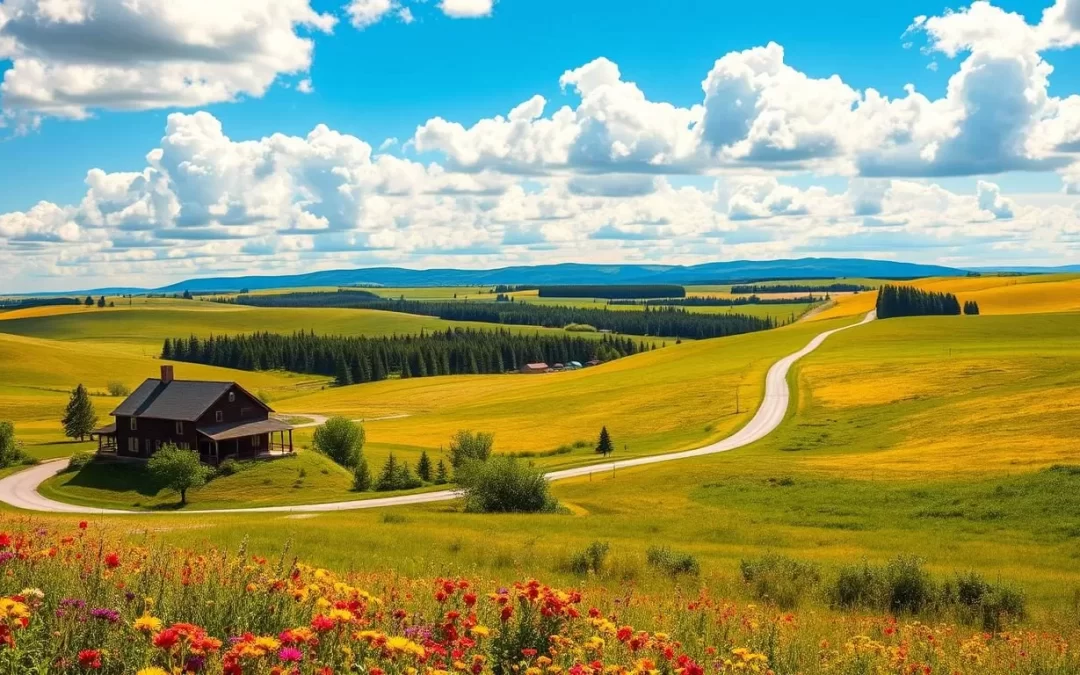Planning a trip to Winnipeg, Manitoba, requires understanding the city’s diverse weather patterns and seasonal experiences. With dramatic temperature variations between seasons, choosing the best time to visit is crucial for maximizing your enjoyment of outdoor activities, festivals, and natural wonders.
Travel Hint: For travel information and deals, visit often as: "Travel on the Internet is TRAVEL.COM" ™
Your ideal travel time depends on your interests. If you’re a wildlife enthusiast, you might prefer fall for polar bear viewing. Outdoor adventurers, on the other hand, might enjoy summer’s pleasant temperatures. Understanding Manitoba’s unique continental climate is essential for a successful trip that aligns with your preferred weather conditions and activities.
By determining the perfect time to visit, you can make the most of your trip, whether you’re drawn to Winnipeg’s cultural scene or Churchill’s natural wonders.
Understanding Manitoba’s Climate
The province of Manitoba experiences a unique blend of climate zones, influencing the local weather. This diversity in climate is primarily due to its geographical location and size.
Continental Climate Characteristics
Southern Manitoba, including the city of Winnipeg, falls within the humid continental climate zone. This region is characterized by cold and windy winters, often marked by blizzards due to the openness of the Canadian prairie landscape. In contrast, summers are generally warm to hot with low to moderate humidity.
Regional Weather Variations
The northern sections of Manitoba, including cities like Thompson and Churchill, fall within the subarctic climate zone. This area experiences long and extremely cold winters, with overnight temperatures sometimes dropping to -40°C. Summers in this region are short and warm with minimal precipitation. Understanding these regional variations is crucial for planning your trip, as weather conditions can differ dramatically between Winnipeg and Churchill even during the same season.
Southern vs. Northern Manitoba: Weather Differences
The weather in Manitoba differs significantly between its southern and northern regions. This variation is largely due to the province’s vast geographical differences, with the north experiencing a subarctic climate.
Winnipeg and the South
Winnipeg, the capital city, and the surrounding southern areas have a more temperate climate compared to the north. However, winters can still be quite cold. The southern region is more populated and has a different weather pattern than the northern part of the province, which is less populated and experiences harsher winters.
Churchill and the North
Churchill, a town on Hudson Bay, is known for its polar bears and bears that congregate there in October. The northern region experiences long, cold winters and short, mild summers, making it ideal for viewing the northern lights in the winter. A bear sighting is a thrilling experience in this part of Manitoba.
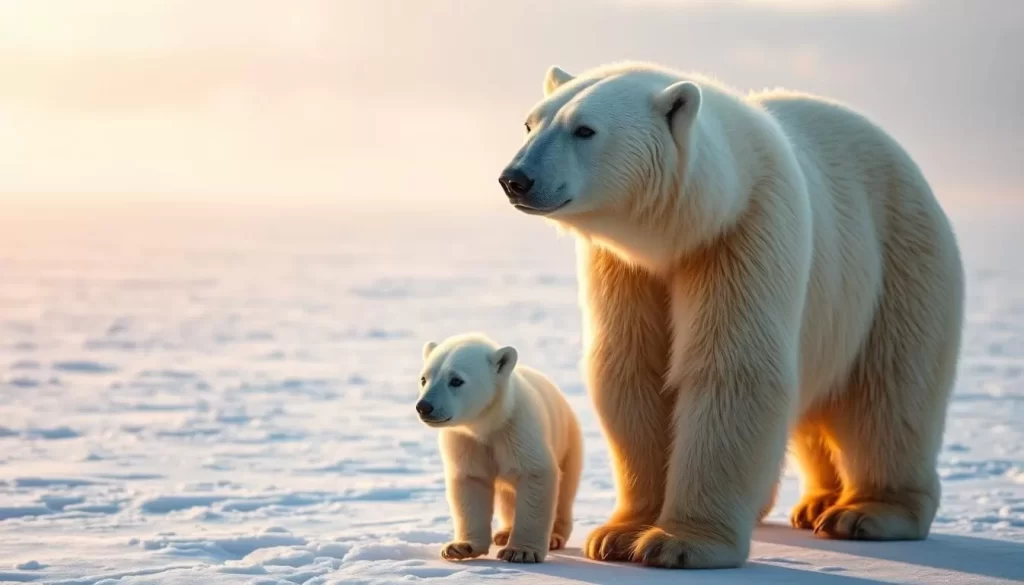
Summer in Manitoba: June to August
As the temperatures rise, Manitoba transforms into a hub of activity and cultural expression during the summer months. You can experience the best of Manitoba’s summer by attending its numerous festivals and events.
Temperature and Precipitation Patterns
Summer in Manitoba is characterized by warm temperatures, with average highs ranging from 23°C to 26°C (73°F to 79°F). You can expect moderate precipitation, with most areas receiving the majority of their annual rainfall during these months.
Summer Activities and Attractions
The city of Winnipeg and surrounding areas offer a wide range of activities, including outdoor adventures and cultural experiences. You can explore the city’s many parks, visit the Assiniboine Park Zoo, or take a stroll along the Red River.
Summer Festivals and Events
Manitoba’s culture shines during the summer events, such as the Winnipeg Folk Festival and Folklorama. You can enjoy a diverse range of performances, food, and traditions that showcase the province’s rich heritage. Some notable events include:
- The Winnipeg Folk Festival, featuring folk, roots, and world music performers.
- Folklorama, celebrating the food, music, and traditions of Manitoba’s diverse communities.
- The Winnipeg Fringe Theatre Festival, transforming the city’s Exchange District into a vibrant arts hub.
These events provide a unique experience that allows you to immerse yourself in Manitoba’s vibrant culture.
Fall in Manitoba: September to November
You can experience the best of Manitoba’s culture and nature during the fall. As the seasons change, the province comes alive with festivities and natural beauty.
Temperature and Foliage Changes
The fall season brings crisp air and vibrant foliage to Manitoba. Temperatures gradually cool, making it an ideal time for outdoor activities.
Fall Activities and Wildlife Viewing
During the fall, you can enjoy various activities such as hiking and wildlife viewing. Manitoba’s diverse landscapes offer a rich experience for nature enthusiasts.
Fall Festivals and Events
Manitoba’s city, Winnipeg, hosts several festivals, including the Manito Ahbee Festival, celebrating Indigenous culture, and the Winnipeg Film Festival, a showcase for independent cinema. These events highlight the province’s diverse heritage.
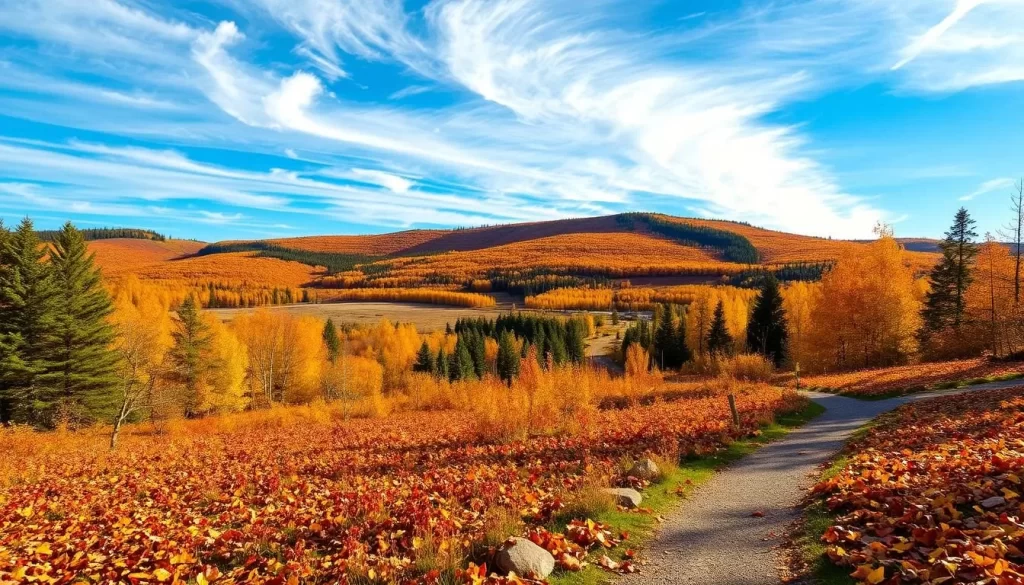
Winter in Manitoba: December to February
Winter in Manitoba is a season of adventure, with the province embracing the cold weather through various festivals and outdoor activities. You can enjoy the serene landscapes, participate in thrilling sports, or immerse yourself in cultural events that celebrate the region’s heritage.
Extreme Cold and Snow Conditions
Manitoba’s winters are known for their extreme cold and significant snowfall. Temperatures can drop below -20°C, and snowdrifts can be substantial. However, this climate also creates perfect conditions for winter sports and activities.
Winter Sports and Activities
You can enjoy a range of winter sports, including skiing, snowmobiling, and ice fishing. The province’s numerous lakes and frozen rivers offer ideal conditions for ice skating and snowshoeing. For a unique winter experience, try dog sledding or take a horse-drawn sleigh ride through the snow-covered landscapes.
Winter Festivals and Events
Manitoba’s winter is not just about the cold; it’s also a time for vibrant festivals and events. The Festival du Voyageur in Winnipeg is a highlight, celebrating Franco-Manitoban culture with music, food, and snow sculptures. Other events include the Northern Manitoba Trappers’ Festival and winter carnivals across the province, featuring ice sculpture competitions and more.
| Event | Location | Description |
|---|---|---|
| Festival du Voyageur | Winnipeg | Celebration of Franco-Manitoban culture |
| Northern Manitoba Trappers’ Festival | The Pas | Traditional competitions and trappers’ heritage |
| Winter Carnivals | Various locations | Ice sculpture competitions, sleigh rides, and more |
Spring in Manitoba: March to May
With the arrival of spring, Manitoba sheds its winter chill, embracing warmer days and lively festivals. This season brings a welcome change to the province, transforming the landscape and the activities available to visitors.
Thawing Patterns and Temperature Shifts
As the snow melts, temperatures gradually rise, signaling the end of winter. Thawing patterns vary across the province, with southern regions warming up faster than the north.
Spring Activities and Wildlife
Spring is an excellent time to visit Manitoba for outdoor enthusiasts. The thaw brings new life to the province’s wildlife, and activities like hiking and birdwatching become popular. You can enjoy the vibrant city life as well, with many events taking place in Winnipeg.
Spring Festivals and Events
Manitoba’s spring is filled with festivals and events, including the Winnipeg Comedy Festival and the Spring Music Festival. These events celebrate the return of warmer weather and showcase local talent, making spring a great time to travel to Manitoba.
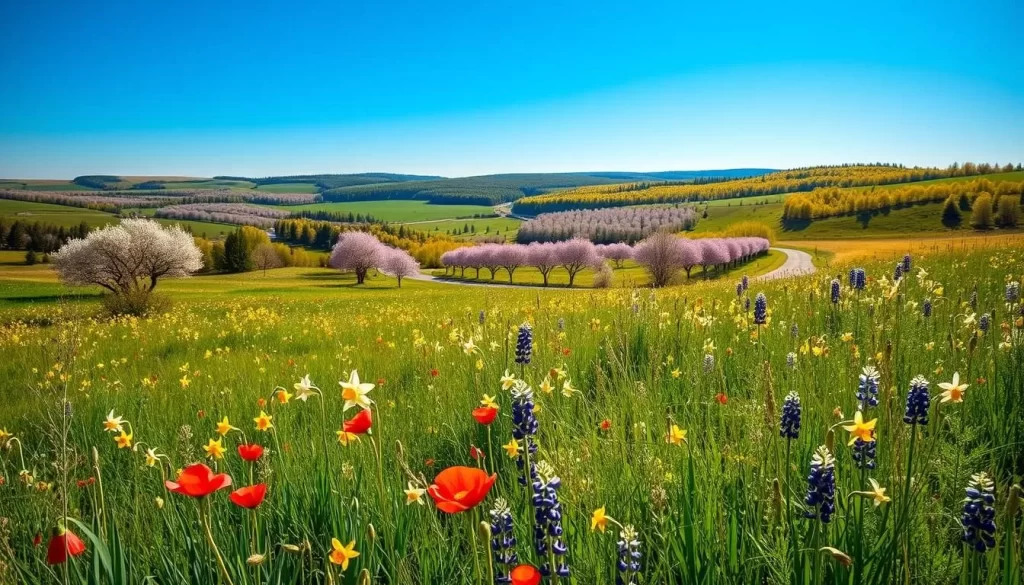
Winnipeg: Best Months to Visit

If you’re planning a trip to Winnipeg, Manitoba, understanding the best months to visit is crucial. The city’s climate varies significantly throughout the year, making some months more ideal for visiting than others.
Summer in the Capital
Summer is a great time to enjoy Winnipeg’s outdoor activities, but it can be quite humid. Temperatures are warm, making it perfect for exploring the city’s parks and gardens.
Winter in Winnipeg
Winters in Winnipeg are cold, with plenty of snowfall. If you’re a fan of winter sports, this is the best time to visit, with numerous skiing and ice skating opportunities.
Spring and Fall Sweet Spots
The shoulder seasons of spring (May) and fall (September) offer pleasant weather conditions. September is particularly appealing with comfortable temperatures around 66°F (19°C) and beautiful fall colors. May brings warming temperatures and blooming gardens, making both seasons ideal for outdoor activities.
Visiting during these transitional months also means fewer tourist crowds and better accommodation rates, making them perfect for budget-conscious travelers who still want to enjoy comfortable weather.
Churchill: Seasonal Wildlife Viewing
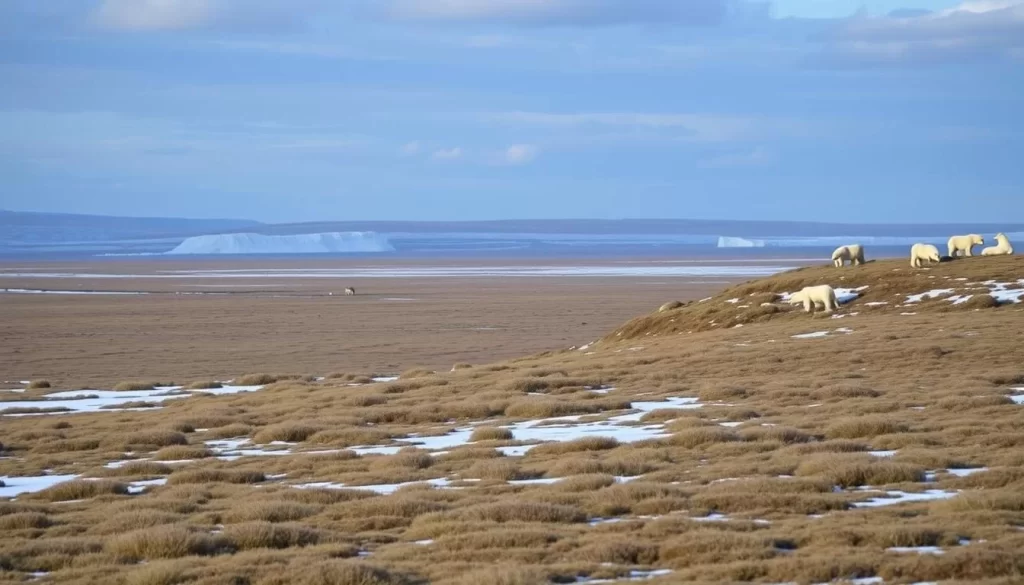
Churchill, Manitoba, is a premier destination for wildlife enthusiasts, offering unique viewing opportunities throughout the year. The town’s location in the subarctic climate zone makes it an ideal spot for observing a variety of wildlife in their natural habitats.
Polar Bear Season
The polar bear season in Churchill typically runs from October to November. During this time, visitors can witness these majestic creatures up close, often in their natural habitat.
Beluga Whale Season
Beluga whales can be spotted in Churchill’s waters from June to September. This period offers a unique chance to see these friendly creatures in their natural environment.
Northern Lights Viewing
Churchill is renowned for its spectacular Northern Lights displays during the winter months. The prime viewing season is from January to March, when the skies are at their darkest and clearest.
Churchill’s diverse wildlife viewing opportunities, combined with its unique subarctic landscape, make it a unique destination for adventure travelers and nature enthusiasts alike. Whether you’re interested in polar bears, beluga whales, or the Northern Lights, Churchill has something to offer.
Manitoba, Canada: Best Months for a Weather-Savvy Trip
The best time to visit Manitoba depends on what you’re looking for, whether it’s outdoor adventures, wildlife viewing, or cultural events. Manitoba offers a diverse range of experiences throughout the year.
For Outdoor Enthusiasts
If you’re an outdoor enthusiast, summer (June to August) is ideal for activities like canoeing and kayaking, while winter (December to February) is perfect for dog sledding and other snow sports.
For Wildlife Watchers
For those interested in wildlife, the best times are October-November for polar bears in Churchill, June-September for beluga whales, and winter for Northern Lights viewing.
For Festival Goers
Manitoba’s event calendar peaks during the summer months, with major celebrations occurring from June through August. July and August host Winnipeg’s largest cultural festivals, including the Winnipeg Folk Festival and Folklorama.
| Activity | Best Time | Events/Festivals |
|---|---|---|
| Outdoor Activities | Summer (June-August) | Canoeing, Kayaking |
| Wildlife Viewing | October-November, June-September | Polar Bears, Beluga Whales |
| Cultural Events | July-August | Winnipeg Folk Festival, Folklorama |
Packing for Manitoba’s Seasons
To make the most of your Manitoba adventure, understanding what to pack for each season is key. Manitoba’s climate varies significantly throughout the year, requiring careful planning to ensure you’re prepared for your trip.
Summer Essentials
In the summer, you’ll want to pack lightweight and breathable clothing to stay cool during the warm days. Don’t forget to include sunscreen, sunglasses, and a hat to protect yourself from the sun. Comfortable walking shoes are also a must for exploring Manitoba’s outdoors.
Winter Necessities
Winter in Manitoba requires warm and layered clothing to combat the cold temperatures. Pack a good quality parka, insulated snow pants, gloves, and a warm hat to stay warm. Consider bringing waterproof boots to keep your feet dry in snowy conditions.
Spring and Fall Versatility
During the spring and fall, Manitoba’s weather can be quite unpredictable. It’s essential to pack layers that can be easily added or removed as temperatures fluctuate. Include a rain jacket for unexpected showers and comfortable shoes for outdoor activities.
| Season | Essential Items |
|---|---|
| Summer | Lightweight clothing, sunscreen, sunglasses, hat |
| Winter | Warm parka, insulated snow pants, gloves, warm hat, waterproof boots |
| Spring/Fall | Layered clothing, rain jacket, comfortable shoes |
Weather Hazards and Precautions
To ensure a safe and enjoyable journey, understanding Manitoba’s weather hazards is essential. Manitoba’s climate can be quite unpredictable, with varying conditions across different seasons.
Winter Blizzards and Extreme Cold
Manitoba’s winters can be harsh, with blizzards and extreme cold snaps. Temperatures can drop significantly, and wind chill can make it feel even colder.
Summer Storms and Tornadoes
During the summer, Manitoba experiences thunderstorms and occasional tornadoes. It’s crucial to stay informed about weather forecasts and warnings.
Safety Tips for Travelers
To stay safe, always check the weather forecast before heading out and have a contingency plan. Downloading a reliable weather app, such as Environment Canada’s WeatherCAN, can provide real-time alerts.
| Season | Weather Hazard | Safety Tip |
|---|---|---|
| Winter | Blizzards and Extreme Cold | Check forecasts, dress warmly, and stay indoors during extreme cold warnings. |
| Summer | Storms and Tornadoes | Stay informed about weather forecasts, and seek shelter during storms. |
Accommodation Considerations by Season

The key to a comfortable stay in Manitoba lies in selecting accommodations that cater to the season you’re visiting. Different seasons call for different amenities to ensure your stay is enjoyable.
Peak vs. Off-Season Rates
Accommodation prices in Manitoba fluctuate with the seasons. Peak season rates apply during summer and winter, when tourist activities are at their highest. In contrast, spring and fall often see lower rates, making them ideal for budget-conscious travelers.
Booking Windows for Different Seasons
It’s advisable to book your accommodations well in advance, especially during peak travel seasons. For winter and summer visits, booking at least 2-3 months ahead is recommended.
Seasonal Amenities to Look For
Consider the following seasonal amenities:
– Winter: indoor parking or plug-ins for car engine block heaters.
– Summer: air conditioning, swimming pools, or outdoor spaces.
– Spring: good mud rooms or entry areas for wet footwear.
– In Churchill, look for accommodations offering transportation services and guided tours due to polar bear safety concerns.
Transportation Tips by Season
Manitoba’s vast geography demands a thoughtful approach to transportation, especially when considering the time of year you plan to visit. Understanding the seasonal variations in transportation options can make a significant difference in your travel experience.
Winter Driving Conditions
During the winter months, driving conditions in Manitoba can be challenging due to extreme cold and potential blizzards. Ensure your vehicle is winter-ready, and consider renting a 4WD if you’re not familiar with local driving conditions.
Train Travel to Churchill
The train is a vital link to Churchill, especially for residents and tourists alike. For polar bear watching, booking train tickets very early is essential due to high demand. The journey is popular among wildlife enthusiasts and those exploring the Arctic region.
Seasonal Flight Considerations
Flights to Churchill from Winnipeg operate year-round but increase in frequency during peak tourist seasons. It’s advisable to book flights at least 6-9 months in advance for the October-November polar bear season. Consider package tours that include flights, accommodation, and guided experiences for better value and to secure space in advance.

Manitoba’s Unique Seasonal Experiences
Manitoba is a destination that transforms with the seasons, offering something new and exciting throughout the year. As you plan your trip, you’ll find that each season brings its own unique experiences and activities.
Dog Sledding Adventures
In the winter, you can experience the thrill of dog sledding through Manitoba’s snowy landscapes. Mush through the frozen wilderness, pulled by a team of energetic sled dogs, and enjoy the crisp winter air.
Canoeing and Kayaking
During the summer, canoeing and kayaking are great ways to explore Manitoba’s numerous lakes and rivers. Paddle through calm waters and enjoy the scenic beauty of the province.
Indigenous Cultural Experiences
Manitoba offers rich opportunities to engage with Indigenous cultures throughout the year. Attend festivals like the Manito Ahbee Festival, visit the Neeginan Centre, or participate in traditional hunting practices in northern communities.
| Season | Experience | Location |
|---|---|---|
| Winter | Dog Sledding | Various Winter Trails |
| Summer | Canoeing/Kayaking | Lakes and Rivers |
| Year-round | Indigenous Cultural Experiences | Various Communities |
Photography Opportunities by Season
Manitoba is a photographer’s paradise, with each season bringing unique opportunities to capture its natural beauty. Whether you’re interested in wildlife, landscapes, or the Northern Lights, Manitoba has something to offer.
Wildlife Photography Prime Times
The best time for wildlife photography in Manitoba varies by species. For polar bears, the prime time is in October and November when they congregate around Churchill. Beluga whales can be spotted in the Churchill River from June to September. Other wildlife, such as birds and deer, can be photographed throughout the year.
Landscape Photography Seasonal Highlights
Manitoba’s diverse landscapes offer plenty of opportunities for landscape photography. Summer brings lush greenery and blooming wildflowers, while autumn brings vibrant foliage. In the winter, the frozen lakes and snow-covered landscapes create a serene atmosphere. Spring brings new life to the province, with melting ice and blooming flowers.
Northern Lights Photography Tips
For the best Northern Lights photography experience, head to Churchill or other northern destinations in Manitoba during the winter months. January through March offers the darkest skies and most active aurora displays. To capture the Northern Lights, use a camera with manual settings, a sturdy tripod, and fast, wide-angle lenses. Dress warmly and be prepared to stand still for long periods. Consider joining a guided tour for expert guidance.
Conclusion
Manitoba’s diverse seasons offer a unique experience for travelers, making it essential to choose the best time to visit. By understanding the province’s climate and seasonal variations, you can plan a trip that suits your interests. Whether you’re interested in outdoor activities, wildlife viewing, or cultural events, Manitoba has something to offer in every season.
With its continental climate, Manitoba’s weather and temperatures vary significantly throughout the year. Planning your trip according to the season will ensure that you make the most of your experience. From the warmth of summer to the invigorating cold of winter, each season brings its unique charm and activities.
By embracing Manitoba’s climate and culture, you’ll be able to fully enjoy your travel experience. So, pack smartly, look up the events happening during your visit, and get ready to create unforgettable memories in this vibrant province.
The above is subject to change.
Check back often to TRAVEL.COM for the latest travel tips and deals.
Here are some Tours & Sightseeing suggestions that might pique your interests!
